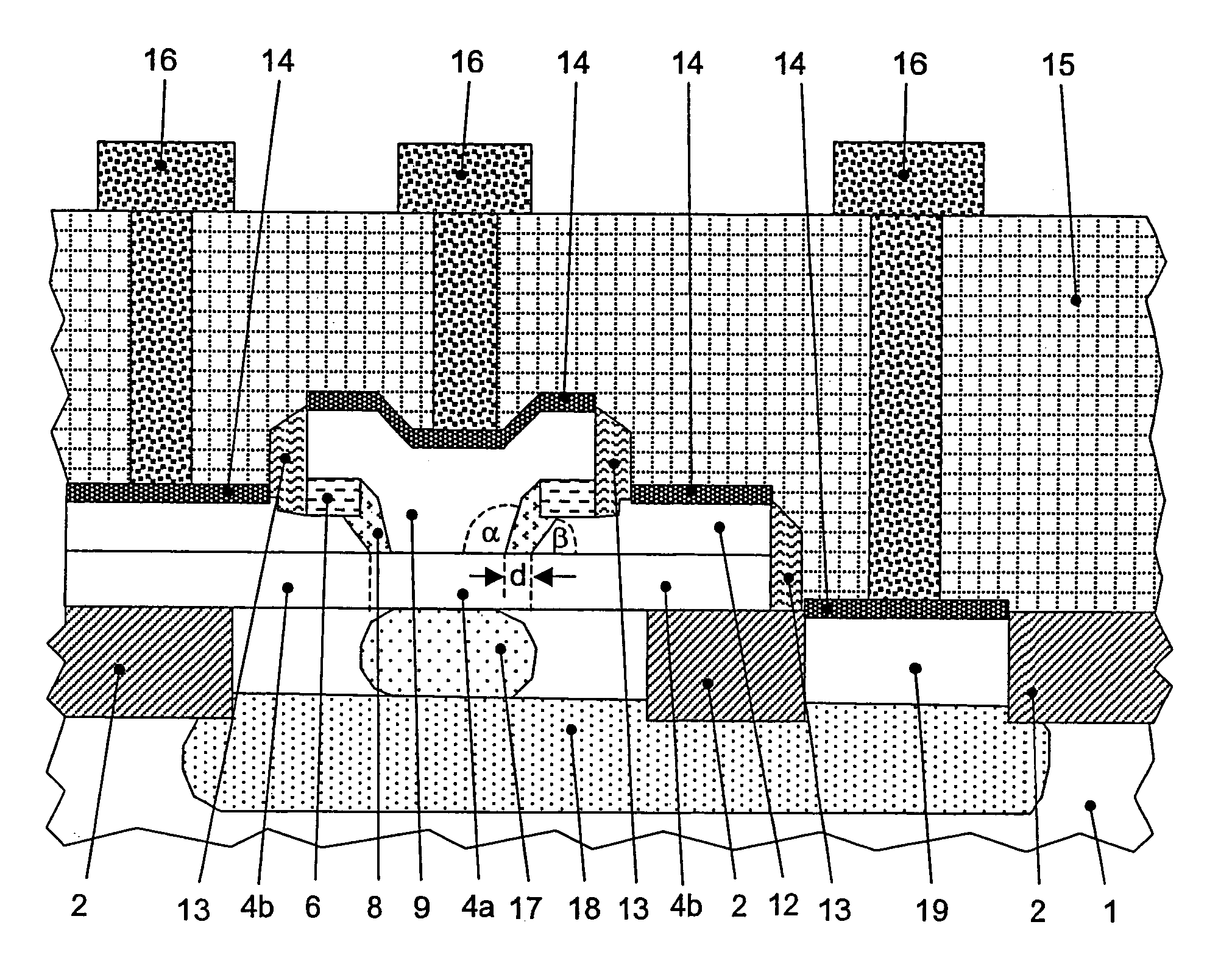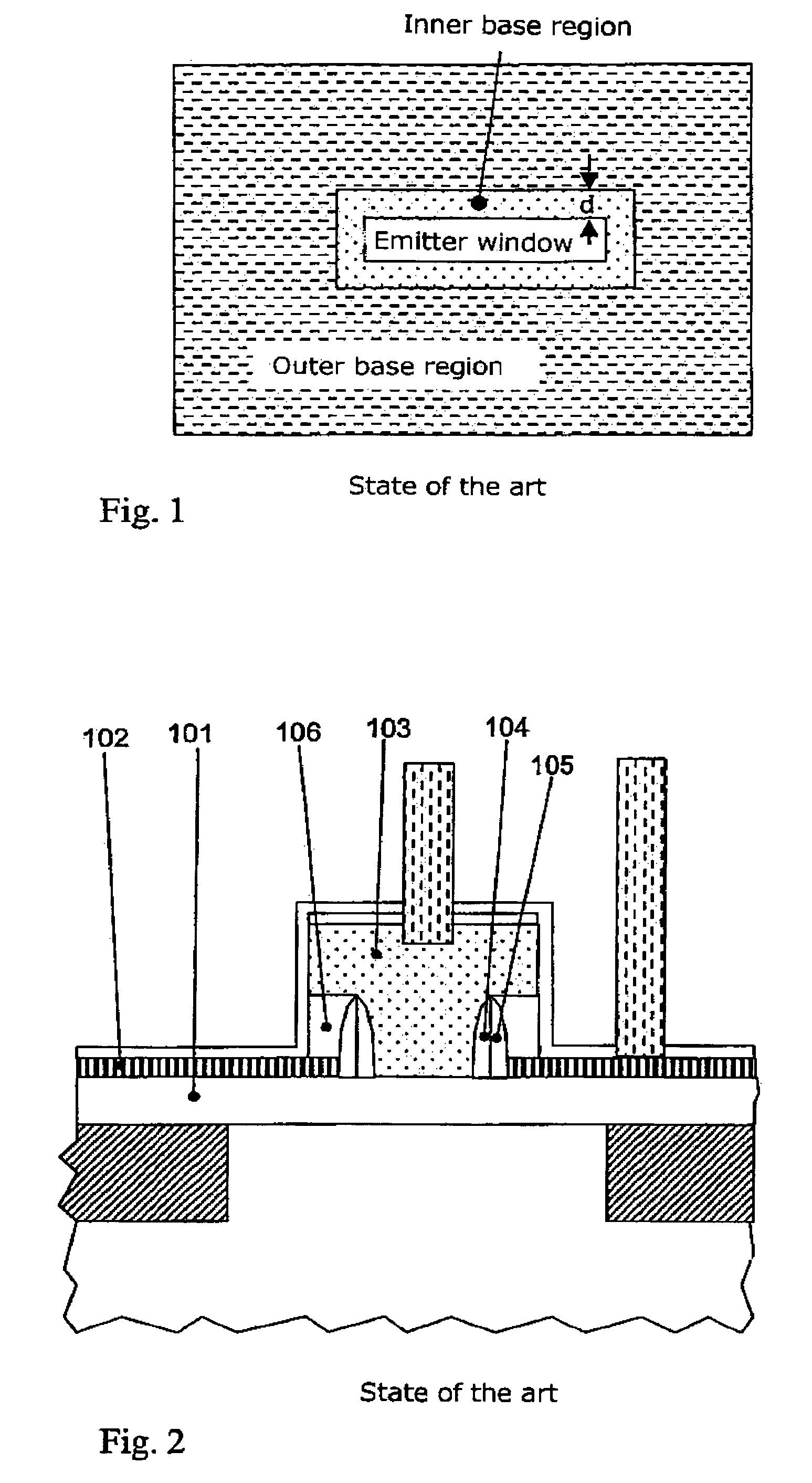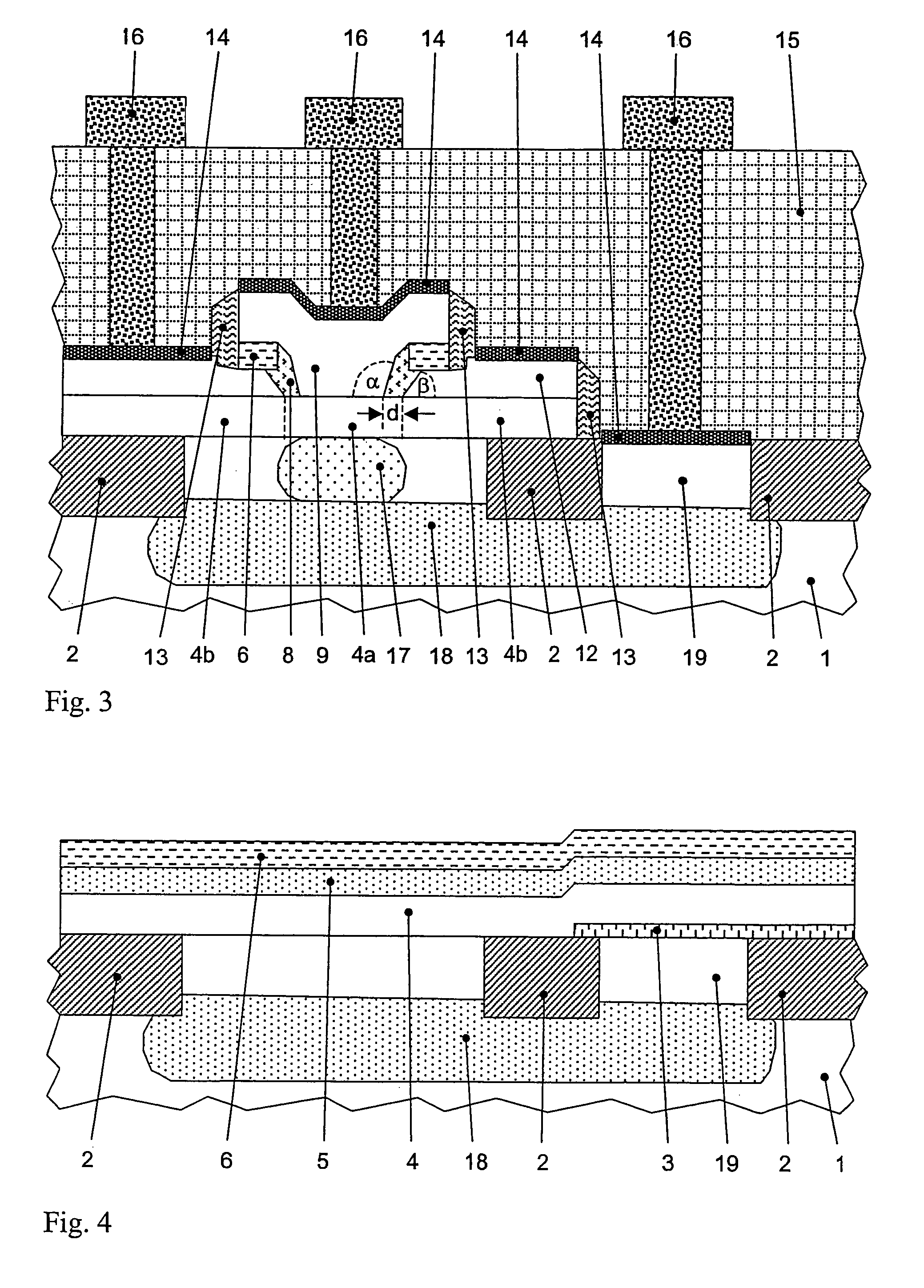Bipolar transistor with raised base connection region and process for the production thereof
a bipolar transistor and raised base technology, applied in transistors, electrical devices, semiconductor devices, etc., can solve the problems of large width of the boundary between the emitter and the outer base layer relative to the inner base layer, and in part even at its greatest width, so as to reduce the base resistance, reduce the effect of doping and low emitter resistan
- Summary
- Abstract
- Description
- Claims
- Application Information
AI Technical Summary
Benefits of technology
Problems solved by technology
Method used
Image
Examples
example 1
[0078]FIG. 3 is a cross-sectional view showing the structure of an embodiment of the bipolar transistor of the invention. In this example an npn-transistor with an epitaxial base is produced on a high-ohmic, p-conducting Si substrate 1. The essential features of the described arrangement can also be applied to other substrate dopings and pnp-transistors.
[0079]The npn-transistor includes an n-conducting emitter 9, a p-conducting base 4 and an n-conducting collector 17. The collector is brought into contact by way of an n-conducting region 18 and an n-conducting collector connection region 19. Arranged above the collector region is a first epitaxial base layer 4 which contains a p-doping. In particular the epitaxial base layer can include an SiGe layer. For example the epitaxial base layer can include a layer sequence Si / SiGe / Si. In addition the epitaxial base layer can be doped with carbon. The epitaxial base layer can be particularly advantageously produced by differential epitaxy. ...
example 2
[0091]A first process for the production of a bipolar transistor with a raised base connection region will now be described with reference to FIGS. 4 through 9. In the following Figures the same structural elements are denoted by the same references.
[0092]In particular the process according to the invention permits the production of high-speed bipolar transistors in integrated bipolar and BiCMOS procedures.
[0093]The embodiment involves a process for the production of npn-bipolar transistors on a p-conducting substrate 1. Active regions and insulating regions 2 are structured on the substrate 1. By way of example n-conducting regions 18, 19 were produced in the region of the collector of the transistor by masked ion implantation.
[0094]n-Conducting and p-conducting wells are produced in the CMOS regions and gates of polysilicon are structured and provided with lateral spacers.
[0095]An auxiliary layer 3 is deposited on the Si wafers structured as described. That auxiliary layer can be ...
example 3
[0110]A second process for the production of a bipolar transistor with a raised base connection region differs from the process described in Example 2 essentially in that the raised base connection region is not deposited in self-adjusted relationship with the emitter window. That process will now be described with reference to FIGS. 10 and 11.
[0111]Up to deposit of the base layer 4 the process is identical to the process described in Example 2. An insulating layer 20 is then deposited on the base layer 4. That insulating layer preferably comprises silicon dioxide and is preferably of a thickness of between 40 nm and 150 nm.
[0112]An emitter window is structured in the insulating layer 20 by way of a lacquer mask. The emitter 9 is deposited in a further step. The emitter preferably comprises silicon which is provided in situ with an n+-doping. The emitter can be monocrystalline or polycrystalline in the region of the emitter window. An insulating layer 21 which preferably comprises s...
PUM
 Login to view more
Login to view more Abstract
Description
Claims
Application Information
 Login to view more
Login to view more - R&D Engineer
- R&D Manager
- IP Professional
- Industry Leading Data Capabilities
- Powerful AI technology
- Patent DNA Extraction
Browse by: Latest US Patents, China's latest patents, Technical Efficacy Thesaurus, Application Domain, Technology Topic.
© 2024 PatSnap. All rights reserved.Legal|Privacy policy|Modern Slavery Act Transparency Statement|Sitemap



